Dr. Ashok Eye Hospital
THORAIPAKKAM, CHENNAI
Dr Ashok Orange Vision Centre
(UNIT OF CENTRE FOR EYE AND HEALTH CARE PVT LTD)
Kanathur, CHENNAI
About Us
Dr Ashok Eye Hospital (Unit of Centre for Eye and Health Care Pvt Ltd) is a state of the art complete eye care hospital whose motto is Excellence in Eye Care. The Hospital is located in Thoraipakkam in Chennai and delivers personalized care with the apt use of technology and evidence based practice of medicine. The specialists collectively have vast clinical and surgical experience in their fields.

Our Specialties
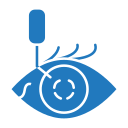
Cataract and Cataract - Surgery
Eyes have an important structure called lens, which helps focus the rays of light on to the retina. Clouding or opacification of the lens is cataract.
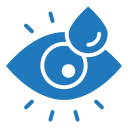
Cornea and Anterior Segment
The ocular surface comprise of Eye lids, Cornea and Sclera. Cornea is the transparent front portion of the eye ball which is responsible.

Orbit and Oculoplasty
The eye is like an odd shaped sphere which is partly housed in a bony cavity. This space is called the orbital cavity and contains the muscles.
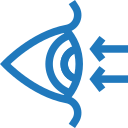
Refractive Surgery - LASIK / ICL
Spectacles are an aid to see better, however, not everyone needs it. It is required because the dimensions of the eye do not bring.

Retina Clinic
Retina is the light sensitive layer at the back of the eye. It receives the rays of light and sends it to the brain via the optic nerve for interpretation.

Paediatric Ophthalmology
A child’s eye is not a miniature adult eye, it is a whole new visual system, which is constantly changing with the growth of the child.
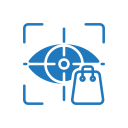
Neuro - Ophthalmology
Uveal tract is the vascular middle coat of the eye ball. It is highly vascular so the common conditions affecting the uveal tract
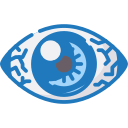
Uvea and Ocular inflammation
A child’s eye is not a miniature adult eye, it is a whole new visual system, which is constantly changing with the growth of the child.
Working Hours (Sunday Closed)
| Monday | 08:30 AM – 08 PM |
| Tuesday | 08:30 AM – 08 PM |
| Wednesday | 08:30 AM – 08 PM |
| Thursday | 08:30 AM – 08 PM |
| Friday | 08:30 AM – 08 PM |
| Saturday | 08:30 AM – 08 PM |
FAQ

Our Services
- Out-Patient Services
- Comprehensive Eye Examination
- Investigations for Eye Conditions
- Lasers & Minor Eye Procedures
- In-Patient Services
- Tele-Ophthalmology Services
- Community Ophthalmology
- Family/General Physician Consultation
- Adult Vaccination
- Preventative health check-ups
- Tele/Video consultations
- Minor Surgeries
- Optical Services
- Contact Lens Clinic
- Pharmacy
- Laboratory
- [ The Rangarajan Vision and Health - Foundation ]
- Insurance/TPA Support
Comprehensive Eye Check-up

History Taking
The first step of examining a patient is documenting a detailed history of the complaints for which the person has come to consult the doctor.

Slit lamp Examination
The slit lamp helps the ophthalmologist see the front of the eye in detail with illumination and magnification. There are blue and green filters for special tests.

Vision and Refraction
In this stage of ocular evaluation, a refraction value is taken with the help of an automated machine and then the distance and near visual acuity of each eye and then

Intra Ocular Pressure
Certain structures within the eye manufacture a fluid called aqueous humour, which nourishes the structures within the anterior segment of the eye and leave.

External Examination
The extra ocular movements of the eyes are synchronised movements which involve many cranial nerves and results in binocular vision and improved range of vision.

Retina Evaluation
The retinal evaluation is best done following pupillary dilation, which enables the examiner to see the central and the retinal periphery.
Testimonials

Iam happy with there service keep it up
dr. Manikandan sir is very patient in attending us and giving medications. He provides very good treatment and will recover with best results
The appointment process is also very easy.
Diagnos systematicaly and treat very carefully.
Strongly suggested for family.
. Kind and spend enough time to diagnose and address the issues.
Very courteous and helpful..
Dr Ashok is a gentleman doctor explains the patient all the issues concerning with the eye and gives opinions to the patients to proceed further..
Overall a good eye clinic under one roof..
Wish the team all the very best ♥️💯
I truly appreciate his dedication, care, and the time he spends understanding each patient’s concern. Highly recommended for anyone looking for a dependable and compassionate general physician in Chennai.
I got redness and a minor swelling in my left eye, so i went to him, he just diagnosed me for less than 3 mins and said, "you got a viral infection, i'll give you drops".
Initially i thought, does he diagnosed my eye properly, does the drops he gave are appropriate for the infection, because he just diagnosed for very less time, and also he is in a hurry to leave,
But after using the drops for only one day, the infection got reduced and now i'm fine, thanks to Dr.Ashok
A special mention to Harini, who was extremely helpful in coordinating everything and clearly explaining the procedure, and to Dr. P. R. Balamurugan, who was very courteous, patient, and made the surgery process completely hassle-free.
Highly recommend this hospital for their professionalism, compassion, and excellent patient care.
He’s our family Doctor. And we are very grateful to him.
Dedicated and passionate Doctor.
Highly recommended.
The staffs are very polite and supportive
Thank you ashok sir and team
Much appreciated
approachable on phone. Have visited with my family members for past 2 years, highly recommend
2. Fate or what, I went second time for changing my specs. the specs they gave they have buried the lens in a way that a mild tear happened in one of the edges. The thickness of my lens is more but I dont know if they have applied 200%of pressure to let it fit inside. but it lead to a tear in day 1 itself. After that as expected in a months' time lens came off.
I decided not to go with them especially for specs because uality for the price is not great. And even if the complain its manufacturers fault then why u r recommending us those specs. recommend something of good quality.
The next time I went to specsmakers near my house. the past experience with ashok eye hospital gave some light to ask right questions. i waited for two days till specsmakers ordered a 2k specs for me in buy one get one free offer. i was initially having a doubt. but the quality is definitely better than ashok eye hospital's recommendation. especially with our city's dust and sweat. main notable quality is paint on the specs doesnt come out of dust and sweat. they also suggested right thickness of the frame.
This is just for everyone to know about how things work with optometrist in ashok eye hospital. you may see the doctor but for specs and lens I STRONGLY DONT RECOMMEND THEIR INTERVENTION. 2 Stars only for the doctor. And I have already thrown their specs and glasses in the dustbin so unable to upload photos.
For last free months my mother had vision problems and we consumed nearby eye care clinics. All they have suggested is the cataract. We have been thinking where to do this cataract. Based on my relative feedback we heard this hospital has the surgery facility, also it is nearby my home and the surgeryrecovery is fast. Based on their feedback we visited this hospital last week.
Doctor diagnosed the problem calmly and explained the situation. He also suggested cataract surgery as it has grown where surgery is the only option.
We returned home and had discussion and finalized to undergo surgery in this hospital.
We went back to the hospital and requested what kind of test we need to take, so that we can plan the date for surgery.
Doctor prescribed certain test and we did home collection from nearby lab. We also took the eye scan from this hospital, post all the results we consumed doctor for the surgery date, type of lens and surgery cost.
Doctor clearly explained the packages and requested us to choose. Based on our convenience we chosen the lens, package and the date.
Add planned we arrived the hospital on time, the checked from their end and performed surgery. The procedure took not more than 20 mins and this hospital has ambulatory ward. Post surgery my mom arrived to ambulatory ward and stayed for an hour and they checked her eye post surgery and discharged her.
We were asked to come for rewrite the next day. We meet the doctor and doctor c checked her eye and performed eye test. Now she is able to see and read.
Overall i had good experience in this hospital and surgery was performed semelessly.
The staff guided us well in selecting the right frame and lenses.
She feels very comfortable and satisfied with the specs.
They charged rs 20,000 for spectacles for my daughter telling it's a miopic lens and after 6 months rechecking eye power , they are asking me to change the spectacles again for my daughter and telling me to spend another 20K. Worst existence 👎
We had visited couple of weeks back and only had a small follow up dilution test pending and since my kid had exams couldn’t do on the grace time they had given.
We explained so much and requested them to waive off if possible on the follow up visit after the grace time they stated as there was no major test apart from just dilution test and they really didn’t bother to just be little considerate and made it look so bad
The entire experience was very shattering and worst. My kid was crying and none from the hospital bother to come forward and atleast make the kid little to be controlled and rather asked us to go out. Had one staff come forward to atleast console the child would have been little better
We have been going to their clinic past 4 yrs and really didn’t expect for this smallest thing they couldn’t be so considerate and look it so ugly
Just sharing our experiences
Thank you 🥺
When I was go for eye wash
But they don't do that otherwise they are give to me a two useless eye drops bottles price 300
And convenience fees 600
Don't go this center
(Other center are 200-500 charging for eye wash).my personal review for this hospital (10/-10000000000000)
Please anyone tell me where to do eye wash only
Dr is very kind, gentle & professional. Very clearly explains my eye issues, so that I'm more confident now. I'm fully satisfied with his treatment. My wife underwent cataract surgeries for her both eyes. Her vision now is extremely superb & best part is that she could manage both long & short sight without glasses(at the age of 71).
To sum up, the hospital is very hygienic & maintain all safety standards for COVID. The entire team is very friendly & service minded.
K N Santhanam/L&T Eden Park/
Siruseri.
Once again I felt like giving our feedback after two years.
The exceptional care & support, we receive at Dr Ashok Rangarajan hospital during our visits is really superb. Since 2019, we visit the clinic for routine check up.
We would like to mention about Mr Sathish Kumar, Ms. Mahalakshmi, Ms Gnana, Ms. Sumeera, Ms Ashwathi & Ms Vanita with whom we interacted so far. From the moment we stepped in, they made us feel comfortable & well cared for.
A special thanks to Dr Ashok Rangarajan whose expertise & kindness made us grateful for his exceptional service. His guidance, patience & attentiveness were invaluable. He always takes time to answer our questions ensuring we feel confident at ease.
The hospital's facilities were topnotch & in general everything is being handled with utmost care.
We highly recommend to the patients who
need outstanding eye care.
Dr. AR took the time to explain every step of the procedure with clarity and reassurance, making sure I was comfortable and well-informed. The surgery was smooth, and the results have been remarkable—restoring my vision and greatly improving my daily life.
A heartfelt thank you to the entire staff as well. Their warmth, efficiency, and genuine care made me feel at ease from the moment I walked in. From scheduling to post-operative care, they ensured everything was seamless and stress-free.
I highly recommend Dr. AR and the wonderful team to anyone, especially seniors, looking for compassionate and top-quality eye care. Thank you all for making this experience so reassuring and positive!
My spl thanks and Blessings to Dr Ashok. The friendliest Dr I have ever seen in my 70 years of life.
Thank you for the exceptional service
Dr. Ashok is not only highly skilled but also very compassionate and took the time to thoroughly explain the procedure and answer all my questions . The surgery itself went smoothly, and I felt well-cared-for throughout the process.
The staff at the hospital were also quite efficient and cooperative. The facilities were clean and well-maintained.
Post-surgery, my recovery has been progressing well, and I am already experiencing improved vision. I would highly recommend Dr.Ashok and Ashok Eye hospital and express my heartfelt gratitude for such exceptional care.
Vijayant Singh
“I underwent cataract surgery on my both eyes during Aug 2019.almost eleven months are over and i am doing fine. no problems in my eyes.I thank the doctor and staff for all cooperation and support extended to me . My experience with your eye center as a whole was pleasurable and memorable. Thank you all so much. Wishing you all the best in your future endeavors."
“Thank you very much sir for your excellent care. Special thanks to you, for being supportive throughout the process and greeted us with a smile every time we came.
I am extremely pleased with the LASIK I got done at CEHC from you, sir. It was a great experience and it really feels good to see the world without glasses, which makes me more independent.


